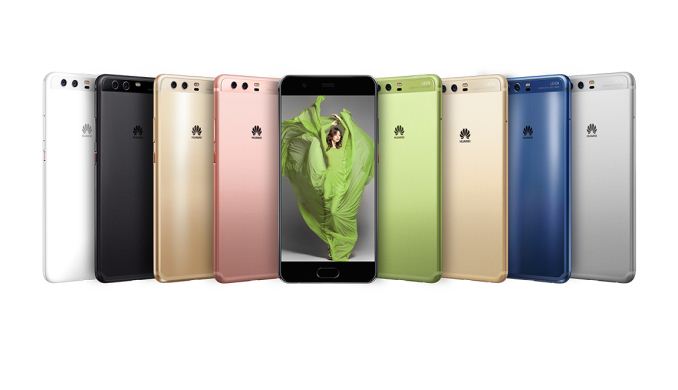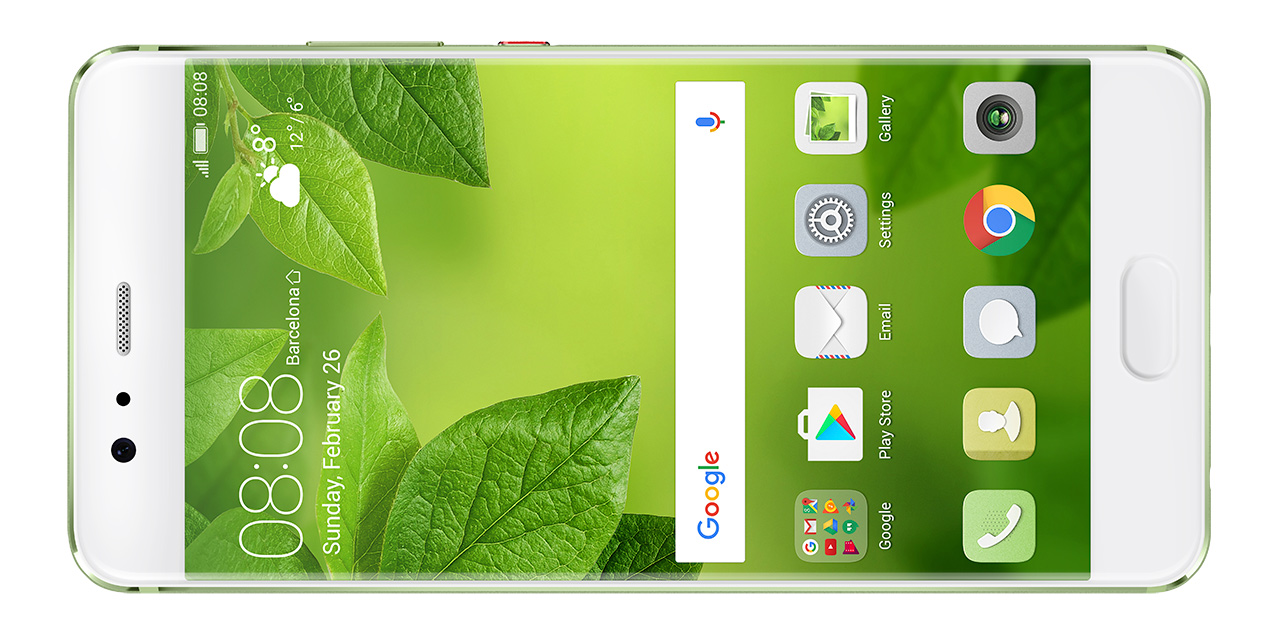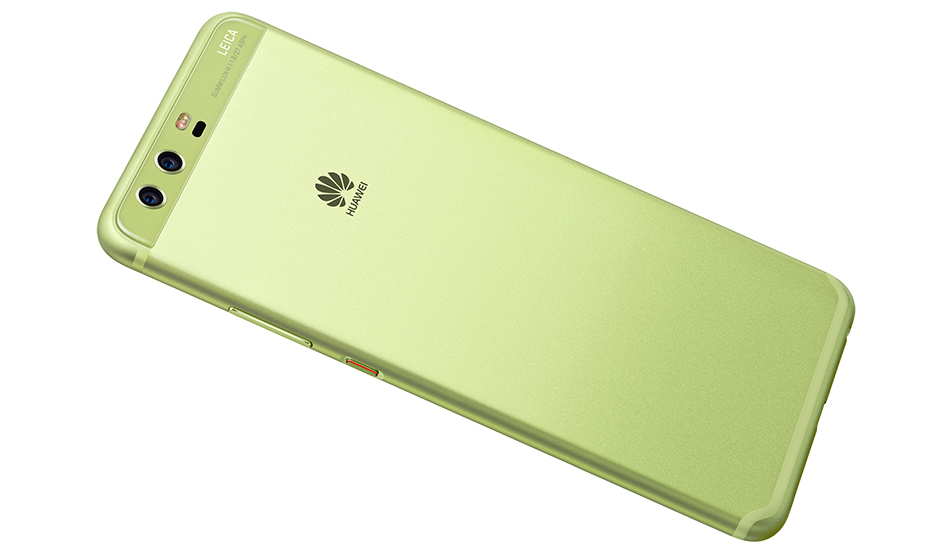Huawei P10 and P10 Plus: Performance & Battery Life Report
by Matt Humrick on May 12, 2017 7:00 AM EST
Huawei is clearly focused on improving the performance of its flagship phones. The P9 and its Kirin 955 SoC performed well in our tests and was smooth and quick during everyday use. For the P10 and P10 Plus, Huawei has tweaked the underlying hardware and software to make them perform even better for longer.
Huawei’s EMUI software includes several features to keep the system feeling more responsive. Using the F2FS filesystem for the /data partition improves storage performance, and Huawei’s new “Machine Learning algorithm” prioritizes system resources (CPU, memory, and storage) to improve responsiveness and performance for the foreground app. Huawei is also using compression to increase the amount of data held in working memory.
| Huawei P10 Series | ||
| Huawei P10 | Huawei P10 Plus | |
| SoC | HiSilicon Kirin 960 4x Cortex-A53 @ 1.84GHz 4x Cortex-A73 @ 2.36GHz ARM Mali-G71 MP8 @ 1037MHz |
|
| Display | 5.1-inch 1920x1080 IPS LCD | 5.5-inch 2560x1440 IPS LCD |
| Dimensions | 145.3 x 69.3 x 6.98 mm 145 grams |
153.5 x 74.2 x 6.98 mm 165 grams |
| RAM | 4GB | 4GB / 6GB |
| NAND | 32GB / 64GB / 128GB + microSD |
64GB / 128GB / 256GB + microSD |
| Battery | 3200 mAh (12.23 Wh) non-replaceable |
3750 mAh (14.33 Wh) non-replaceable |
| Modem | HiSilicon LTE (Integrated) 2G / 3G / 4G LTE |
|
| SIM Size | 1x or 2x NanoSIM | |
| Wireless | 802.11a/b/g/n/ac 2x2 MU-MIMO, BT 4.2, NFC, GPS/Glonass/Galileo/BDS | |
| Connectivity | USB 2.0 Type-C, 3.5mm headset | |
| Launch OS | Android 7.0 with EMUI 5.1 | |
| Software Version Tested | Android 7.0 VTR-L09C432B112 |
Android 7.0 VKY-L29C900B109 |
Inside the new phones is HiSilicon’s Kirin 960 SoC, which uses a big.LITTLE arrangement of four ARM Cortex-A73 CPUs and four Cortex-A53 CPUs. When we looked at the Kirin 960 earlier this year, we found that its A73 core showed higher integer IPC than the Kirin 950/955’s A72 core, but that floating-point IPC generally regressed. The Kirin 960 registered improvements to the memory subsystem too. Even though our lower-level testing produced mixed results, the Kirin 960, which is also used in Huawei’s Mate 9, performed well when running common workloads such as web browsing and photo editing.
In addition to the new CPU, the Kirin 960 also includes a significantly upgraded GPU. The Mali-G71MP8 includes twice as many cores as the Mali-T880MP4 GPU in Kirin 950/955. It’s also based on ARM’s new Bifrost architecture, which includes a number of improvements over the previous Midgard architecture that should help improve shader core utilization.
Huawei, like other OEMs, is currently struggling to procure some of the other internal components—notably NAND and RAM—which can impact overall system performance. Samsung, SK Hynix, and Toshiba have said that they are struggling to produce enough flash memory in the face of increased demand, especially for higher density modules, and issues with ramping up 3D NAND production. This shortage, which applies to DRAM as well, started in 2016 and will likely extend through the remainder of 2017.
With supplies short and component costs rising, Huawei confirmed that it is sourcing memory components from multiple suppliers and stated that it never committed to using any specific type of NAND. Indeed, P10 owners are claiming that some units are using eMMC instead of UFS NAND, along with both LPDDR3 and LPDDR4 RAM. Multi-sourcing is actually very common among smartphone OEMs, particularly larger ones such as Apple, Huawei, LG, and Samsung, for a number of different components, including NAND, RAM, display panels, modems/RF, and camera sensors. Apple has even sourced SoCs from different foundries. Problems can arise, however, if the OEM does not hold its suppliers to the same standards and allows parts from different vendors to vary wildly in performance, which, unfortunately, happens all too frequently.
Based on Huawei’s official statement, we have no way to know who its suppliers are, what components they are or are not using (LPDDR3/LPDDR4, eMMC/UFS), or how many phones are using the potentially slower components. It only said that component selection is random based on the current supply and that there is no way for consumers to know what they are buying before opening the box.
In this report, we’ll establish what components our particular P10 and P10 Plus review units use, and then run them through a series of tests to evaluate everyday performance and battery life. Huawei was able to extend the Mate 9’s battery life over the previous generation, so it will be interesting to see if this is true for the P10 as well.












74 Comments
View All Comments
drajitshnew - Saturday, May 13, 2017 - link
Bravo, that is a brilliant suggestion. Intel does it, AMD does it, nvidia does it, everybody does it. Bin it. The customer is happy, the reviewers don't get accused of anything, and you sell every part that you produce.Bondurant - Wednesday, May 17, 2017 - link
You want a lower price ? So whats the price difference between a UFS 2.1/2.0 and eMMC ? You want that deducted from the overall price ? Lol.zodiacfml - Friday, May 12, 2017 - link
Their market wouldn't bother or notice anyway. They have been making pretty, slim phones which allowed them to reach their current status.Stochastic - Friday, May 12, 2017 - link
Sometimes I wonder how much better consumer tech could be if everyone were as discriminating as Anandtech readers.Eden-K121D - Friday, May 12, 2017 - link
Aesthetics aside. Consumer Tech would be substantially better in terms of Technological advancementaparangement - Saturday, May 13, 2017 - link
I think the comparison to Google Pixel on i/o performance is somehow biased, I remember the storage of Pixel is encrypted by default, at least according to Google...https://blog.google/topics/connected-workspaces/pi...
Matt Humrick - Sunday, May 14, 2017 - link
The P10 uses full-disk encryption, while (I believe) the Pixel uses file-based encryption.ePambos - Saturday, May 13, 2017 - link
I am sorry to report that my Huawei P10 exhibits very different real life battery behaviour than your findings may suggest... As a previous owner or three (3!) Huawei P9 devices I can without any doupt say that they had better battery life than my current P10 that barely gets me through two days of very minimal use. Further more, my Huawei P10 (running factory Android 7.0) shows sudden drops of battery percentage when the phone is idle, or during nighttime even though I carefully configured all apps to be deactivated when screen is off etc. I have a very certain feeling that the idle power consumption of this device is absolutely ridiculous and maybe Huawei should tone down the performance of their processor for every day use in future updates for this phone and let users opt for an extreme/gaming performance mode only when necessary... So far, both camera performance and battery stamina have been dissapointing in comparison to the previous model (P9) which was an excelent device overall...Matt Humrick - Saturday, May 13, 2017 - link
Sorry to hear about your battery life issues. Do you see the same drop overnight if you put the phone in airplane mode? Maybe there's a signal strength issue causing the phone to burn more power.Trixanity - Saturday, May 13, 2017 - link
According to Notebookcheck, both P10 and P9 have an average idle power consumption of 2.1W and 2.37W respectively whereas Galaxy S7 (Exynos) and iPhone 7 have 1.02W and 1.51W respectively. Average load being 6.57W, 3.09W, 4.73W and 3.75W in the same order.It seems like Huawei/HiSilicon have problems with power management and I'm not referring to the out-of-control overclocked Mali G71 on the K960 (I'd bet the maximum of 9.32W would be considerably lower if clocked below 800 MHz or even 900).
Can you corroborate that? Does HiSilicon have a problem that other chip manufacturers do not? Or is it just bad software optimization causing unnecessary load? Do you have other power consumption figures?